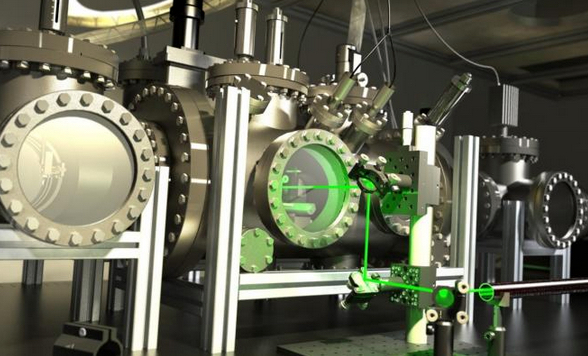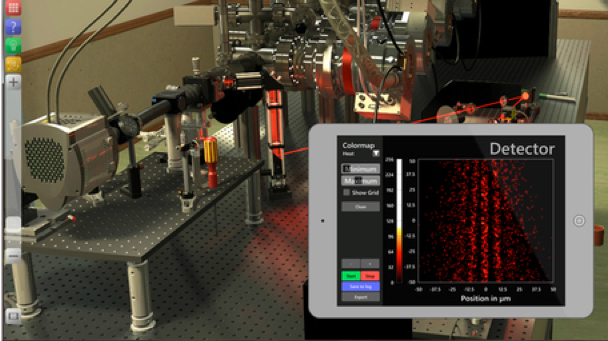A simulated quantum learning lab in Vienna that you can access virtually
September 17, 2015

Interference of complex molecules are pictured in the Kapitza-Dirac-Talbot-Lau interferometer (credit: Quantum Nanophysics group, University of Vienna; Image: Mathias Tomandl & Patrick Braun)
Ever feel like digging into quantum physics — and actually understanding it? Then you may enjoy a novel virtual hands-on remote learning environment developed by quantum physicists at the University of Vienna in collaboration with university and high-school students, and available free online.
The new teaching concept, called “Simulated Interactive Research Experiments” (SiReX), is described in an open-access paper in the journal Scientific Reports.

Simulation of the University of Vienna interferometer: measuring the two-dimensional interference pattern of molecules (credit: Mathias Tomandl et al./Scientific Reports)
The physicists, led by Markus Arndt at the University of Vienna, created two research laboratories as photorealistic computer simulations, allowing you to access simulated instruments in virtual experiments*.
The physicists say the virtual laboratories provide insights into fundamental understanding and applications of quantum mechanics with macromolecules and nanoparticles, including a wave-particle dualism experiment and interferometry with large molecules.
A version of the virtual lab can also be experienced as an interactive exhibit in the Natural History Museum Vienna.
* Tip: skip the “find the coffee cups” practice task at the beginning.
Quantum Nanophysics group, University of Vienna| Interactive quantum lab
Abstract of Simulated Interactive Research Experiments as Educational Tools for Advanced Science
Experimental research has become complex and thus a challenge to science education. Only very few students can typically be trained on advanced scientific equipment. It is therefore important to find new tools that allow all students to acquire laboratory skills individually and independent of where they are located. In a design-based research process we have investigated the feasibility of using a virtual laboratory as a photo-realistic and scientifically valid representation of advanced scientific infrastructure to teach modern experimental science, here, molecular quantum optics. We found a concept based on three educational principles that allows undergraduate students to become acquainted with procedures and concepts of a modern research field. We find a significant increase in student understanding using our Simulated Interactive Research Experiment (SiReX), by evaluating the learning outcomes with semi-structured interviews in a pre/post design. This suggests that this concept of an educational tool can be generalized to disseminate findings in other fields.